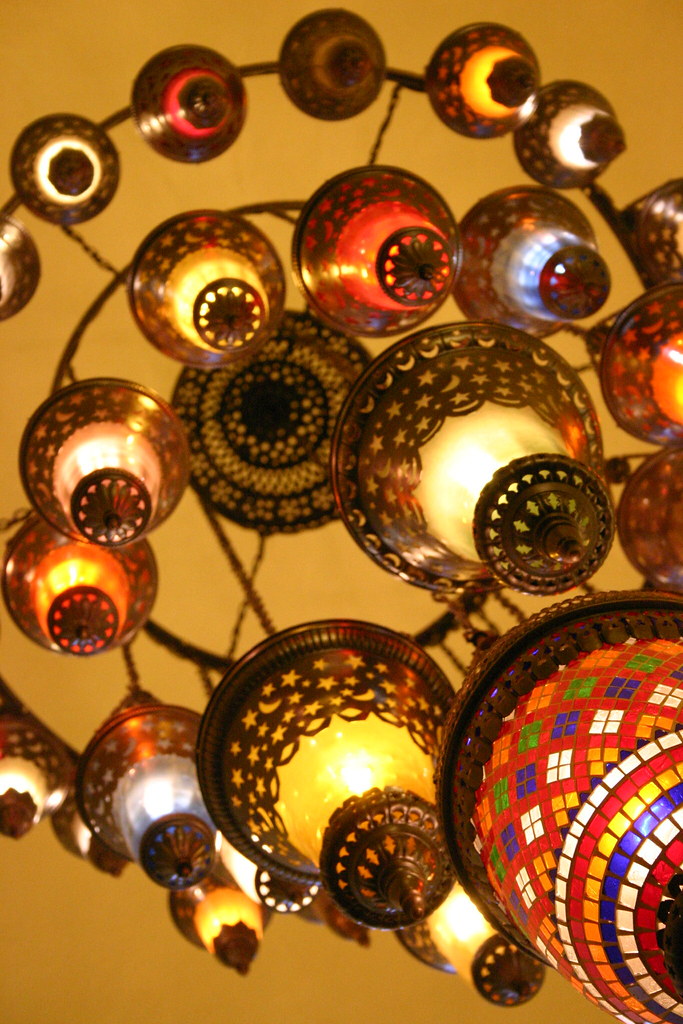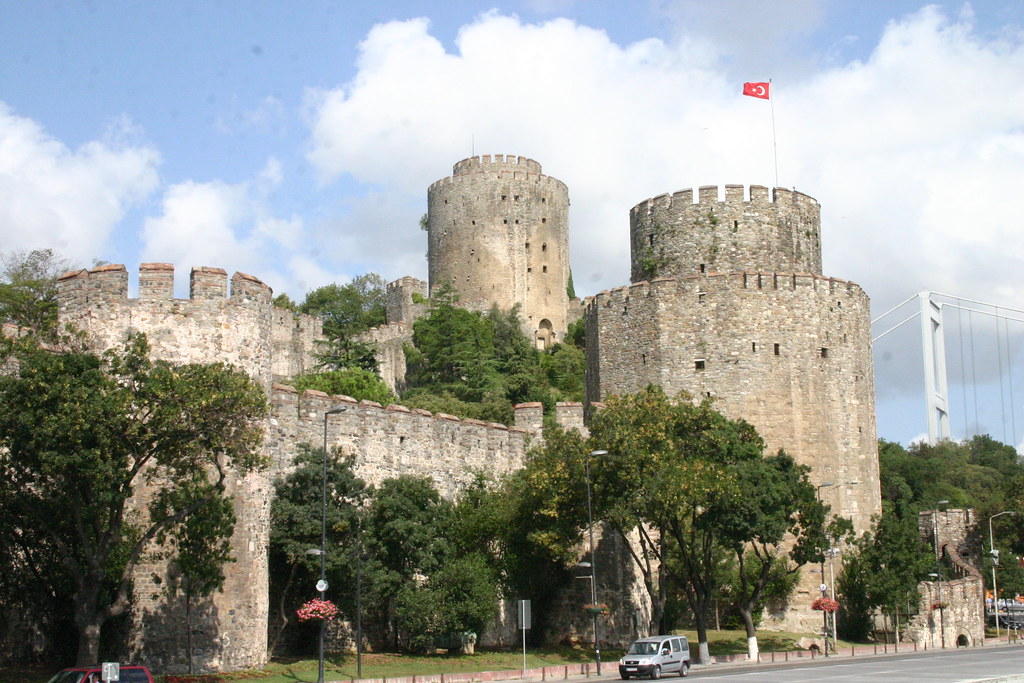Istanbul: Cosmopolitan City of Things New and Old
La Sierra University Honors students are all about asking questions, embodying curiosity, exploring what surrounds them. Today was no different from previous days in this remarkable city of contrasts and cosmopolitan people groups, but this time we crossed astounding time zones in our visits and conversations, from the new stone age to yesterday’s news, from the earliest known settlement in Istanbul to unsettling issues from the latest papers, from the old to the new.
We began the day with a remarkable concession to me, the archaeologist, perhaps to humor me so that we could get back to modern Istanbul and all the cultural, political, and economic issues with which we are dealing each day we are here. We traveled on one of the oldest rail systems in the country on our way to the oldest settlement of Istanbul and one of the most exciting excavation projects currently underway in the world.
In order to create a transportation  hub for the city, including a new tunnel beneath the Bospherus Straight which would be the deepest such tunnel anywhere, construction teams in 2004 encountered archaeological remains of a massive harbor serving international marine trade primarily from the fourth to the tenth centuries AD.
hub for the city, including a new tunnel beneath the Bospherus Straight which would be the deepest such tunnel anywhere, construction teams in 2004 encountered archaeological remains of a massive harbor serving international marine trade primarily from the fourth to the tenth centuries AD.
Archaeological finds are important to Turkey, and after tense (this is my rather tame substitution for what the excavators said) negotiations, the preservation of ancient history trumped immediate transportation needs if the archaeology could be completed quickly.
Excavations began immediately, for the most part running year round 24 hours per day, employing several hundred participants, many of them university students. It quickly became apparent that they had happened upon the largest known harbor anywhere in the world for the Byzantine period. The excavations stretch some 500 meters parallel with, but inland a couple hundred meters from the present Marmara Sea shoreline.
The photos show the size  of the project and the mostly happy integration of a search for evidence of ancient maritime travel with a search for solutions to modern transportation problems.
of the project and the mostly happy integration of a search for evidence of ancient maritime travel with a search for solutions to modern transportation problems.
Construction has already begun, and will likely take another two to three years. The archaeologists will be done with their work fairly soon.
The director of the shipwreck excavations, Prof. Ufuk Kocabas (Kojabash), kindly took time from a frenetic schedule to introduce us to the site and send us with two of his graduate students for a full two-hour tour. This included an hour for us to become acquainted first hand with the latest of 34 ships to be excavated from this ancient harbor, and the major onsite lab where wooden ship fragments were undergoing study, 3-D virtual digital reconstruction, and a multiple-year restoration process which will turn wood the consistency of wet cardboard into relatively stable and sturdy planks and beams.
Excavations also revealed a Neolithic (New Stone Age) settlement from around 6500 BC. This is the time most archaeologists and anthropologists agree saw the domestication of agriculture and animals and the invention of pottery. Thus, a period of major transitions in the way human beings adapted to their surroundings and survived with their families.
Two websites might prove helpful to those wishing to pursue this amazing project further: www.divingintopast.com and www.yenikapiwrecks.com. We were more than fortunate to visit the site and learn firsthand about shipping in the past.
Following a splendid lunch on the sidewalk of Khorasani Restaurant in the old part of Istanbul, we then visited the historical and archaeological museums of Istanbul. The archaeology section includes an exhibit on the Yenikapi harbor, a fitting conclusion to our visit to the site earlier in the day. Also to be found here are Hittite political treaties, including the earliest one known which provides historical background for the way the Ten Commandments and parts of the book of Deuteronomy are presented in the Bible, in which God is the sovereign making the treaty; the famous “Gezer Calendar,” a small stone inscription from the tenth-century city of Gezer, Israel, one of the early examples of Hebrew writing; and the late eighth-century Hebrew inscription from Hezekiah’s tunnel, marking the successful completion of the 1800-foot tunnel beneath the City of David which the king chiseled from stone to ensure a water supply within the city in the face of the Assyrian assault on Jerusalem in 701 BC. In addition, there is a cuneiform Hittite text from the 14th century BC about how to care for horses which I photographed for my granddaughter, Sara, who is big into horses (and yes, of course I have photos of my three grandchildren).
We then repaired to the quietness of an artists medresse, or school where we often go for tea and discussions, to talk about our impressions of Turkey and the various stories we have been told here to represent the country. This was a serious exercise in critical thinking, processing input from all kinds of people in various settings of this huge cosmopolitan center which reaches across the east and west, Europe and Asia.
Carmen and I, leaving the rest to forage for dinner on their own (it wasn’t hard when our good new friend Josh called a friend of his who owns a restaurant), went back to Sultanamet Square which rests over the ancient Hippodrome (horse and chariot racing track), and adjoins the famous Blue Mosque at one end, to experience once again the Iftar (break-fast) following the day-long fast of Ramadan. Thousands of people, thousands on the square and throughout the park, all waiting with families and music and dancing and noise for the 7:50 pm call to prayer from the Blue Mosque, signaling all of these thousands to break the fast together. The music ends, the call to prayer is over, children and their families are at picnic tables and on lawn blankets, and everyone begins at the same moment … to eat. Summertime Ramadan devotion makes for long days without food or water, and the transformation at sunset from fast to feast is sudden, simultaneous, and sumptuous.
As I mentioned at the first of this blog, La Sierra University Honors students are all about asking questions, embodying curiosity, exploring what surrounds them. These students are good! So good, that I have established a series of awards, the stiff criteria to which they have risen with style and panache:
--Intrepid Travelers Award for absolutely unabashed, fearless exploration of whatever there is to discover and learn – Ivan, Nikki and Hayden
--Shopping Queen Award for absolutely unfettered exploration of the Grand Bazaar in search of the best deal on tea sets and other sundries, armed with emerging bartering skills – Amanda, Rebecca and Nilmini
--Shopping King Award – could have been Brandon if he would not keep getting lost in the Grand Bazaar
--Animal Lovers Award for uncontrollable attraction to, understanding of, and care for cats – Ariel
--Quiet Sages Award for calm, wise, self-collected behavior and speech – Sterling and Andy
--Best Questions Asked Award (if they have to do with Turkish politics, especially if controversial) – Nolan
--Best Candidate to Flunk this Class Award for a statement made following copious libations of peach nectar (misrepresented, so he says): “The archaeology this morning was rather lame.” – Anonymous (since Alex wanted us to keep it this way)
--Best Good Hair Day Award for frizzly, free-flying, forever growing, carefully coiffed hair style -- David
--Cleanliness Is Next to Godliness Award for using sanitizing lotion after each pet of cats, shake of hands, use of restrooms, and before each meal in one coordinated, wave motion of shared sanitizing lotion bottles raised, upturned, and squeezed into open palms – everyone
--“Like”-ness Award for use, like, of “like” a lot, like in sentences or, like, not complete sentences – everyone of the like current university student generation
It’s been a great day in Istanbul. Tomorrow evening we board an overnight train for Ankara.




Fortunately Alex is in luck, since you aren't the one assigning the grades, Dr. Clark! Seriously, though, one of the things that's been fun and interesting in this group has been the diversity of interests. Within the group we have those who are particularly interested in and have specialized experience with music, art, politics, archaeology, economics and business, religion, and a variety of other topics. I've felt privileged to learn a lot from the students this trip, and their thoughtful and insightful comments have enriched the journey for all of us.
ReplyDeleteJust one clarification:
ReplyDeleteI'm a firm believer in Sarcasmism. It's a way of life where you can take the liberty of saying something while not meaning it, or even meaning the opposite. I said what i said knowing Dr Clark was next to me and loud enough for him to hear. On purpose.
The archeaology was actuqally one of the best thigs we did on the trip, hands down.
Just t clarify